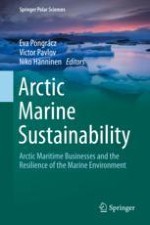2020 | OriginalPaper | Buchkapitel
15. Arctic Search and Rescue: A Case Study for Understanding Issues Related to Training and Human Factors When Working in the North
verfasst von : Derek D. Rogers, Michael King, Heather Carnahan
Erschienen in: Arctic Marine Sustainability
Aktivieren Sie unsere intelligente Suche, um passende Fachinhalte oder Patente zu finden.
Wählen Sie Textabschnitte aus um mit Künstlicher Intelligenz passenden Patente zu finden. powered by
Markieren Sie Textabschnitte, um KI-gestützt weitere passende Inhalte zu finden. powered by
